#Battle of Vercellae
Text

Depiction of the Battle of Vercellae-Giovanni Battista Tiepolo.Oil on canvas, Irregular painted surface.1725–29.Venice
Metropolitan Museum of Art,New York City
The Battle of Vercellae, or Battle of the Raudine Plain, was fought on 30 July 101 BC on a plain near Vercellae in Gallia Cisalpina (modern day Northern Italy). A Germanic-Celtic confederation under the command of the Cimbric king Boiorix was defeated by a Roman army under the joint command of the consul Gaius Marius and the proconsul Quintus Lutatius Catulus.The battle marked the end of the Germanic threat to the Roman Republic.
#art#Giovanni Battista Tiepolo#Venice#18th century#painting#Battle of Vercellae#historic event#Romans#Germanic tribes#30 July 101 BC#101 BC#2nd century BC#europe#ancient europe
3 notes
·
View notes
Text

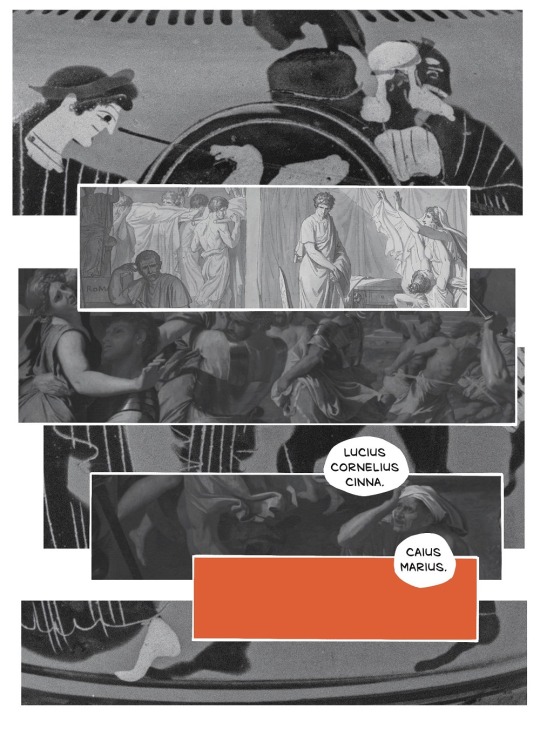
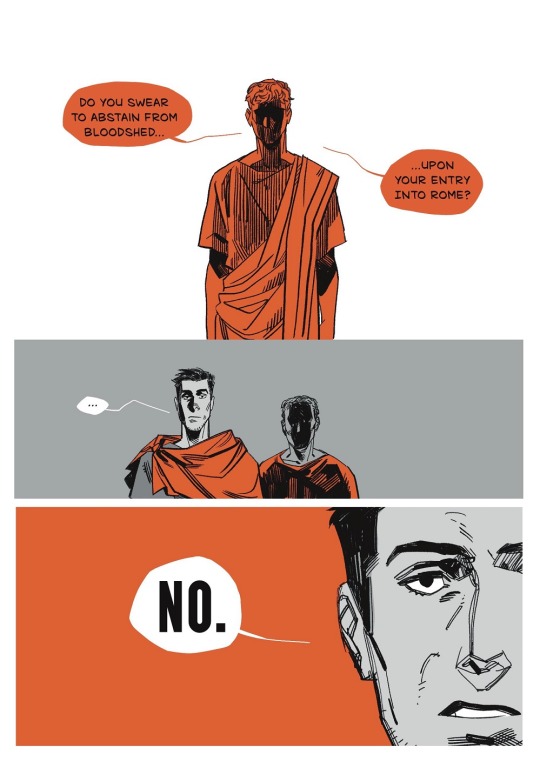


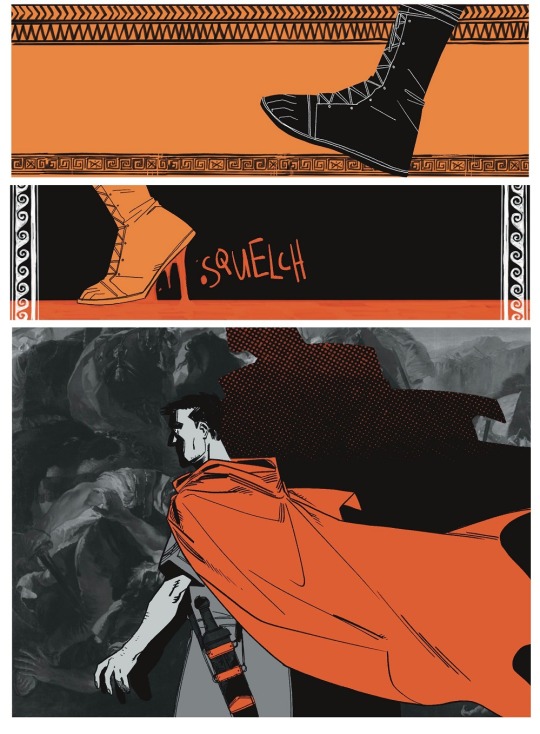
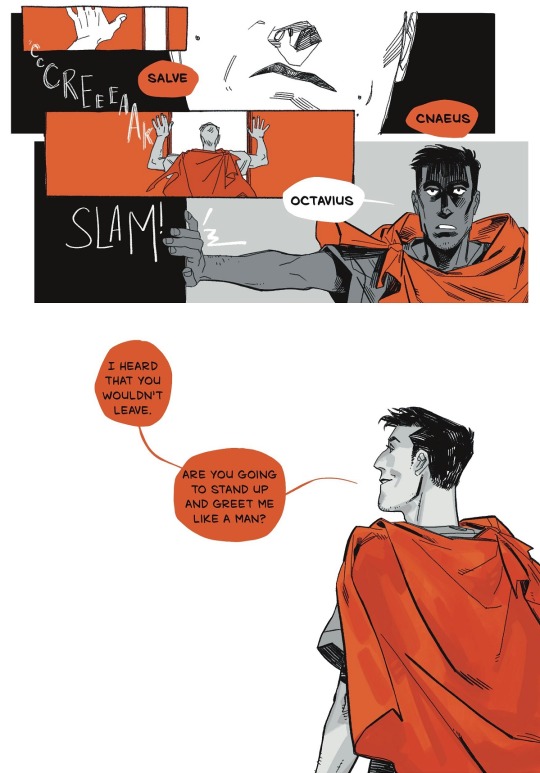
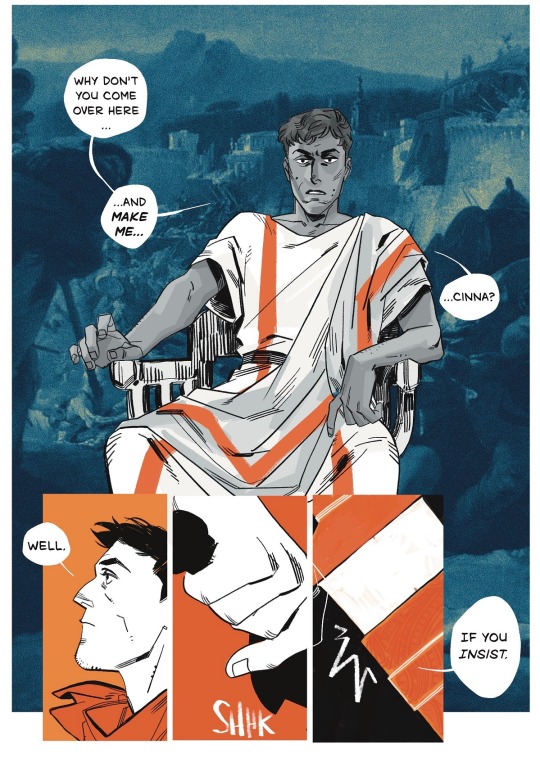


TRIKARANOS: THE PROLOGUE
TRIKARANOS is a dramatized narrative based on ancient events following Crassus (and Pompey and Caesar) through the years 87-48 BCE. Intended for an adult audience.
⭐ Trikaranos will always be free to read (in the near future, you’ll have the option to support this comic & my ability to make it through Patreon!)
⭐ There is no set update schedule (chapters vary in length and will be posted as I finish working on them)
⭐ alternative places to read it (coming soon!)
CREDITS all additional art used are in the Public Domain [as per the Met's Open Access policy]
🍊 The Abduction of the Sabine Women, Nicolas Poussin
🍊 Obverse, a Terracotta neck-amphora depicting Aeneas rescuing his father, Anchises, during the fall of Troy. [description taken from the Met]
🍊 compositional study for The Lictors Bringing Brutus the Bodies of his Sons, Jacques Louis David
🍊The Battle of Vercellae, Giovanni Battista Tiepolo
🍊 The Capture of Carthage, Giovanni Battista Tiepolo
UNDER THE CUT creator's commentary, ancient citations, whatever else seems relevant. ideally, this is optional! you shouldn't need the citations for it to make sense as it unfolds since it's a comic and a story first and foremost, but it's here if you're curious and want to see where the inspiration is coming from!
so! there are a couple of accounts about the return of Marius and Cinna, I've chosen Appian's account for the primary source of inspiration, although I've cut the cast down to it's barest essentials because I want the claustrophobia of violence to really eat itself.
Cinna now began to despise his enemies and drew near to the wall, halting out of range, and encamped. Octavius and his party were undecided and fearful, and hesitated to attack him on account of the desertions and the negotiations. The Senate was greatly perplexed and considered it a dreadful thing to depose Lucius Merula, the priest of Jupiter, who had been chosen consul in place of Cinna, and who had done nothing wrong in his office. Yet on account of the impending danger it reluctantly sent envoys to Cinna again, and this time as consul. They no longer expected favourable terms, so they only asked that Cinna should swear to them that he would abstain from bloodshed. He refused to take the oath, but he promised nevertheless that he would not willingly be the cause of anybody's death. He directed, however, that Octavius, who had gone round and entered the city by another gate, should keep away from the forum lest anything should befall him against his own will. This answer he delivered to the envoys from a high platform in his character as consul. Marius stood in silence beside the curule chair, but showed by the asperity of his countenance the slaughter he contemplated. When the Senate had accepted these terms and had invited Cinna and Marius to enter (for it was understood that, while it was Cinna's name which appeared, the moving spirit was Marius), the latter said with a scornful smile that it was not lawful for men banished to enter. Forthwith the tribunes voted to repeal the decree of banishment against him and all the others who were expelled under the consulship of Sulla.
Accordingly Cinna and Marius entered the city and everybody received them with fear. Straightway they began to plunder without hindrance all the goods of those who were supposed to be of the opposite party. Cinna and Marius had sworn to Octavius, and the augurs and soothsayers had predicted, that he would suffer no harm, yet his friends advised him to fly. He replied that he would never desert the city while he was consul. So he withdrew from the forum to the Janiculum with the nobility and what was left of his army, where he occupied the curule chair and wore the robes of office, attended as consul by lictors. Here he was attacked by Censorinus with a body of horse, and again his friends and the soldiers who stood by him urged him to fly and brought him his horse, but he disdained even to arise, and awaited death. Censorinus cut off his head and carried it to Cinna, and it was suspended in the forum in front of the rostra, the first head of a consul that was so exposed. After him the heads of others who were slain were suspended there; and this shocking custom, which began with Octavius, was not discontinued, but was handed down to subsequent massacres.
Appian, Civil Wars I, 70-71 (trans. Horace White)
Plutarch's biography of Marius also recounts the same event, but I was leaning more on Appian for this.
ALSO! the choice to use Giovanni Battista Tiepolo's painting The Capture of Carthage as a backdrop to Octavius: it's because Cinna and Octavius were co consuls for a minute and Rome and Carthage are twin cities (instar Carthaginis urbem babyyy), and I do love the doubling/twin-ification of a thing. which is what co consuls are to me. we're overlapping the themes, in addition to the overlapping of violence, which is what all iterations of Rome are founded on.

Textual Monuments: Reconstructing Carthage in Augustan Literary Culture, Nora Goldschmidt
the chapter cover is my own illustration of an Etruscan kantharos because Crassus may or may not have had some kind of Etruscan heritage. YMMV but for me it's fun to think about


Marcus Crassus and the Late Roman Republic, Allen Mason Ward (& the citation!)
885 notes
·
View notes
Text







THE (other) 1503 PAPAL CONCLAVE
political alliances, baby!
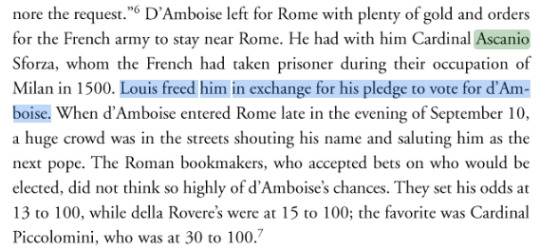
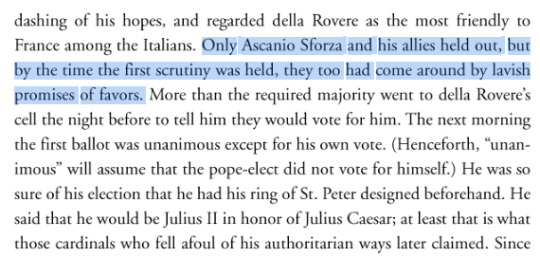
Behind Locked Doors: A History of the Papal Elections, Frederic J. Baumgartner
bhghg you might notice ascanio's line about della rovere being the favored candidate clashes with the citation. it doesn't actually matter because it's a comic, but sometimes snappier dialogue and my inability to spell piccolomini's name right on the first try dictates a creative decision
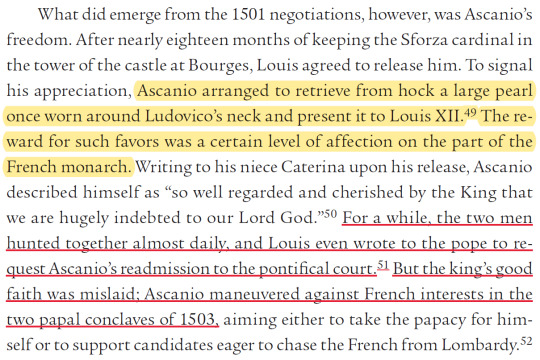
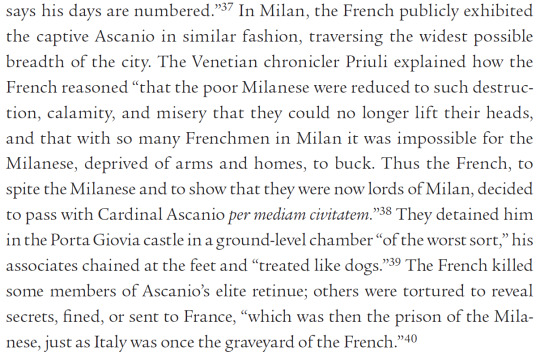
Milan Undone, Contested Sovereignties in the Italian Wars, John Gagné
the panel with the painting insert is of Giovanni Battista Tiepolo's Battle of Vercellae
bsky ⭐ pixiv ⭐ pillowfort ⭐ cohost
#ascanio sforza#giuliano della rovere#komiks tag#drawing tag#italian renaissance tag#(standing at a podium) the spectacle of conspiracy and power dynamics. thank you
208 notes
·
View notes
Text

Denarius minted at Rome in 101 BCE by Gaius Fundanius, one of the tresviri monetales (mint officials) for that year. The coin celebrates the triumph of the consul Gaius Marius after his victories over the Germanic tribes of the Teutones and Cimbri at the battles of Aquae Sextiae and Vercellae, respectively--battles that helped restore Roman military prestige after a string of defeats and perhaps saved peninsular Italy from being overrun. On the obverse, the helmeted head of the goddess Roma. On the reverse, the triumphator Marius in his quadriga (four-horse chariot), accompanied by a youth who holds a laurel branch and rides one of the horses. Photo credit: Classical Numismatic Group, Inc. http://www.cngcoins.com
#classics#tagamemnon#history#ancient history#Ancient Rome#Roman history#Roman Republic#Gaius Marius#art#art history#ancient art#Roman art#Ancient Roman art#Roman Republican art#coins#ancient coins#Roman coins#Ancient Roman coins#numismatics#ancient numismatics#Roman numismatics#denarius
69 notes
·
View notes
Text
The Gauls were a group of Celtic peoples who lived in the region that is now modern-day France, Belgium, and parts of Switzerland, Germany, and Italy. They were a fierce and proud people who left a lasting impact on European history. Here is a timeline of the Gauls and their history:
5th century BCE: The Gauls, known as the Celts at the time, begin to expand their territory from central Europe into what is now France. They establish a powerful presence in the region and are known for their skilled metalworking, impressive art, and fierce warriors.
4th century BCE: The Gauls establish a confederation of tribes that is known as the Arverni. This confederation becomes one of the most powerful political entities in the region, and its leaders are able to exert significant influence over neighboring tribes.
3rd century BCE: The Gauls begin to come into contact with the expanding Roman Republic. In 390 BCE, a Gallic tribe led by Brennus invades Rome and sacks the city. This event is seen as a major turning point in Roman history and marks the beginning of Rome's long-standing conflict with the Gauls.
2nd century BCE: The Gauls continue to clash with the Romans, with both sides winning significant victories. In 121 BCE, the Roman general Gaius Marius defeats a Gallic army at the Battle of Vercellae, effectively ending Gallic resistance to Roman rule.
1st century BCE: The Gauls become fully integrated into the Roman Empire, with many Gallic leaders becoming Roman citizens and serving in the Roman military. However, the Gauls maintain a distinct cultural identity and continue to influence the wider Roman world with their art, literature, and language.
5th century CE: The fall of the Western Roman Empire results in a power vacuum in Gaul, and the region is invaded by various Germanic tribes. The Franks, led by Clovis I, establish a kingdom in Gaul and begin to expand their territory.
8th century CE: Charlemagne, the king of the Franks, unites much of Western Europe under his rule and is crowned Holy Roman Emperor. His reign marks a high point of Gaulish influence on European culture, with the Gaulish language contributing significantly to the development of modern French.
10th-12th centuries CE: The Normans, descendants of Vikings who had settled in northern France, establish a powerful presence in Gaul and become a dominant force in the region. Their influence is felt throughout Europe, and they play a significant role in the development of medieval culture and politics.
In conclusion, the Gauls were a significant force in European history, playing a major role in the development of art, literature, and culture. While they were eventually conquered by the Romans and absorbed into the wider Roman Empire, their influence continued to be felt throughout the centuries, shaping the course of European history in countless ways.

0 notes
Photo
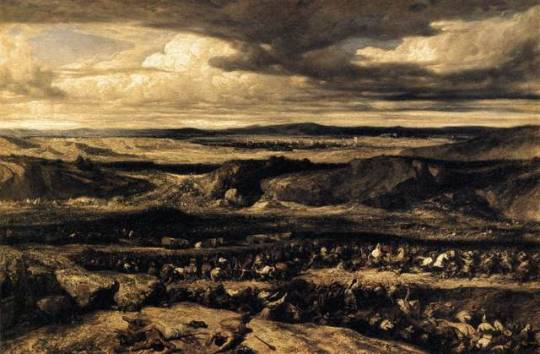
Alexandre-Gabriel Decamps
“The Defeat of the Cimbri”
Oil on Canvas
1833
Musée du Louvre, Paris
>>
Historical context:
Cimbrian War: Battle of Vercellae (101 BCE)
The Battle of Vercellae, or Battle of the Raudine Plain, in 101 BCE was the Roman victory of Consul Gaius Marius over the invading Celto-Germanic tribe of the Cimbri near the settlement of Vercellae in the Roman province of Cisalpine Gaul.
#Alexandre-Gabriel Decamps#The Defeat of the Cimbri#cimbri#kimbern#Battle of Vercellae#cimbrian war#germanic tribes#celtic tribes#celto-germanic tribes#art#history#anthropology
14 notes
·
View notes
Photo
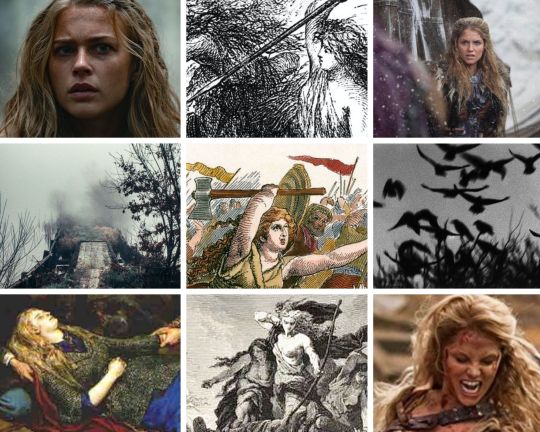
Fighting women of the Germanic tribes
During the expansion of their empire, the Romans sometimes encountered female commanders and female fighters. Some of them belonged to the Germanic tribes. Most accounts depict these women fighting in desperate situations, but they are shown as deadly and uncompromising.
Among these were the Cimbrian women. The Cimbri’s ethnicity is still subject to debate today. Some say that they were Germans, others that they were Celts. They had migrated from Frisia and Jutland and descended toward Italy and several clashes with the Romans followed. In 101 BCE, the Cimbri faced the troops of consul Gaius Marius at Vercellae.
The Cimbrian warriors were defeated, which led the women to take arms, even though the extent of these activities remain unclear. Indeed, according to the account of Florus:
“There was quite as severe a struggle with the women-folk of the barbarians as with the men; for they had formed a barricade of their waggons and carts and, mounting on the top of it, fought with axes and pikes.”
The women sent a delegation to Marius, but failed to secure their freedom. They therefore killed their children and committed suicide. Plutarch gives a slightly different account of the battle, saying that the women fell upon the men who tried to flee and killed them, including their husbands and relatives, and then committed suicide.
Women of the Ambrones , an allied tribe of the Cimbri, displayed the same behavior at Aquae Sextiae. Plutarch gives the following description of the Ambrones’ defeat:
“(...)The Romans kept slaying them until they came in their flight to their camp and waggons. Here the women met them, swords and axes in their hands, and with hideous shrieks of rage tried to drive back fugitives and pursuers alike, the fugitives as traitors, and the pursuers as foes; they mixed themselves up with the combatants, with bare hands tore away the shields of the Romans or grasped their swords, and endured wounds and mutilations, their fierce spirits unvanquished to the end.”
Cassius Dio also writes that during the war with the Marcomanni (166 until 180) the bodies of women wearing armor were found on the battlefield.
The Historia Augusta also mentions that during the triumph of Aurelian:
“There were led along also ten women, who, fighting in male attire, had been captured among the Goths after many others had fallen; these a placard declared to be of the race of the Amazons — for placards were borne before all, displaying the names of their nations”.
This last source isn’t, however, a reliable one, so this story must be regarded with some skepticism.
Bibliography:
Cassius Dio, Roman history
Chrystal Paul, Women at war in the classical world
Florus, Epitome
Historia Augusta
Plutarch, Parallel Lives
#history#women in history#cimbrian women#ambrones women#Marcomanni women#gothic women#germanic women#germanic tribes#warrior women#roman empire#roman history#2nd century BCE#1st century#3rd century#ancient world#ancient history#historyedit#germany#german history#antiquity#perioddramaedit#weloveperioddrama#barbarians#spartacus
92 notes
·
View notes
Text
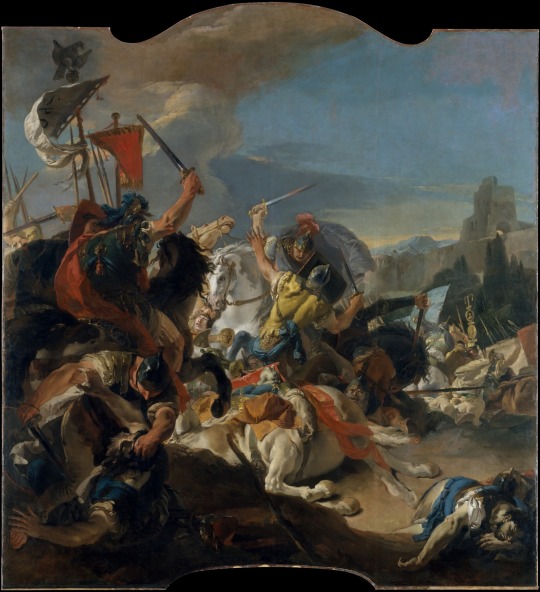
The Battle of Vercellae by Giovanni Battista Tiepolo
#giovanni battista tiepolo#rome#romans#cimbri#cimbrian war#teutones#roman#roman republic#gaius marius#cisalpine gaul#northern italy#germanic#celtic#lucius cornelius sulla#boiorix#vercellae#quintus lutatius catulus#gallia cisalpina#ca' dolfin tiepolos#ancient rome#history#art#painting#europe#european#cavalry
9 notes
·
View notes
Photo

A bit of July 30th history...
101 BC - Battle of Vercellae: Roman army under Gaius Marius defeats the Cimbri in Cisalpine Gaul, ending the Celto-Germanic threat on Italy’s border with over 100,000 Cimbri killed
1619 - House of Burgesses form in Virginia - 1st elective American body
1863 - President Lincoln issues “eye-for-eye” order - to shoot a rebel prisoner for every black prisoner shot
1928 - George Eastman shows 1st amateur color motion picture to guests at his NY house including Thomas Edison
1932 - Walt Disney’s “Flowers and Trees” premiers; 1st academy award winning cartoon and 1st cartoon short to use Technicolor (pictured)
1935 - 1st penguin book is published, starting the paperback revolution
1945 - After delivering the Atomic Bomb across the Pacific, the cruiser USS Indianapolis is torpedoed and sunk by Japanese submarine; only 316 out of 1196 survived, most were attacked by sharks (see Jaws)
1965 - US President Johnson signed into law Social Security Act that established Medicare and Medicaid; went into effect following year
1974 - US House of Reps Judiciary Committee voted to impeach Nixon for blocking Watergate investigation and for abuse of power
2006 - World’s longest running music show “Top of the Pops” is broadcast for the last time - aired for 42 years
#history#anthropology#gaius marius#house of burgesses#eye-for-eye#george eastman#disney#penguin books#uss indianapolis#social security#nixon#top of the pops
33 notes
·
View notes
Photo
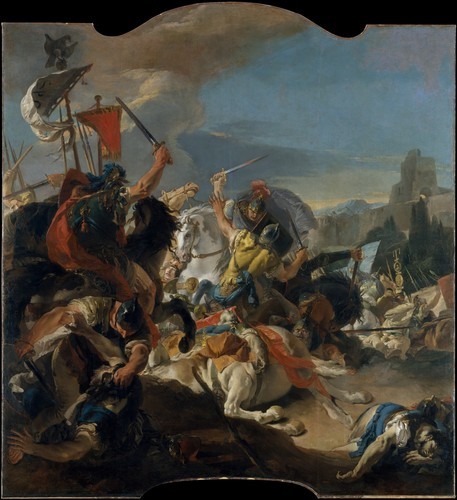
The Battle of Vercellae, Giovanni Battista Tiepolo, 1725–29, European Paintings
Rogers Fund, 1965
Size: Irregular painted surface, 162 x 148 3/8 in. (411.5 x 376.9 cm)
Medium: Oil on canvas
https://www.metmuseum.org/art/collection/search/437794
9 notes
·
View notes
Photo
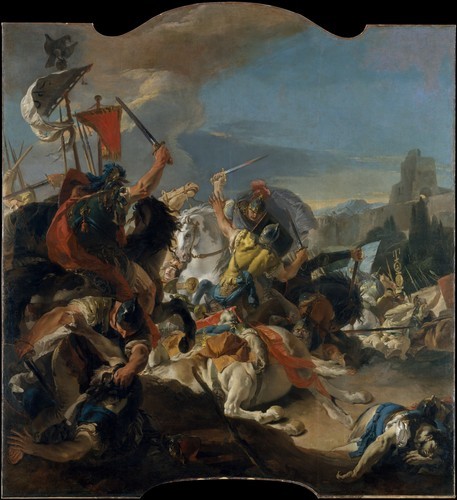
The Battle of Vercellae, Giovanni Battista Tiepolo, 1725–29, European Paintings
Rogers Fund, 1965
Size: Irregular painted surface, 162 x 148 3/8 in. (411.5 x 376.9 cm)
Medium: Oil on canvas
https://www.metmuseum.org/art/collection/search/437794
7 notes
·
View notes
Photo



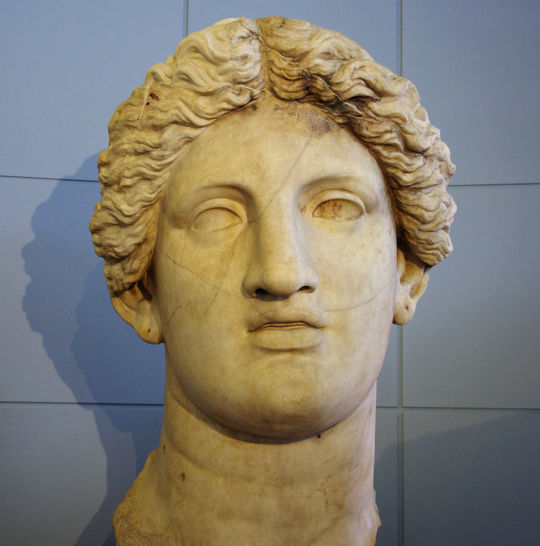
Roman Calendar - July 30: Dies natalis for the temple of Fortuna Huiusce Diei ( ~ Today’s Fortune, The Fortune of this day)
The temple was vowed by proconsul Quintus Lutatius Catulus at the battle of Vercellae in 101 BCE. Roman army managed to beat invading Cimbri forces and procunsul kept his word since a circular temple was built on Largo Argentina.
Pics 1-3, my photos; Rome July 2015, October 2007 and July 2012
Pic 4: Giant marble head of goddess dating back to late 2nd or early 1st century BCE. Attributed to Greek Sculptor Skopas Minor who lived in Rome. Discovered in 1925 from Area Sacra Largo Argentina and currently at Centrale Montemartini Museum.
Wikimedia Commons; photographed by Flanker.
Attribution: Capitoline Museums / CC BY (https://creativecommons.org/licenses/by/3.0)
#Roman Calendar#Roman Religion#goddess#fortuna#roman#temple#Rome#Largo Argentina#Roma#2nd century BCE#my photo#Quintus Lutatius Catulus#Roman consuls
50 notes
·
View notes
Text
started reading the seven wonders by steven saylor. it starts in 92? 91? bce which my brain labels as “colleen territory”. gordianus is the same age as me and It Feels Weird, Scoob. q. lutatius catulus cos 102 is here and has been described a) as having “the soul of a poet” (steven has read his gay epigrams?), and b) as being responsible for the victory at the battle of vercellae (“raudine plain”)
8 notes
·
View notes
Text
Become acquainted with Exciting German Dating Custom
Become acquainted with Exciting German Dating Custom
Towards the top of the 2nd century BC, an enormous immigration of Germanic tribes happened, led by the Cimbri and the Teutones. These people overwhelmed the peoples with whom they got below into speak to and posed a real threat to Italy itself. With the Battle of Aquae Sextiae and the Battle of Vercellae the Germans were nearly annihilated, which concluded the menace. In these two battles the…
View On WordPress
0 notes
Text
Today In History: July 30

A bit of July 30th history…
101 BC - Battle of Vercellae: Roman army under Gaius Marius defeats the Cimbri in Cisalpine Gaul, ending the Celto-Germanic threat on Italy’s border with over 100,000 Cimbri killed
1619 - House of Burgesses form in Virginia - 1st elective American body(pictured)
1863 - President Lincoln issues “eye-for-eye” order - to shoot a rebel prisoner for every black prisoner shot
1928 - George Eastman shows 1st amateur color motion picture to guests at his NY house including Thomas Edison
1932 - Walt Disney’s “Flowers and Trees” premiers; 1st academy award winning cartoon and 1st cartoon short to use Technicolor
1935 - 1st penguin book is published, starting the paperback revolution
1945 - After delivering the Atomic Bomb across the Pacific, the cruiser USS Indianapolis is torpedoed and sunk by Japanese submarine; only 316 out of 1196 survived, most were attacked by sharks (see Jaws)
1965 - US President Johnson signed into law Social Security Act that established Medicare and Medicaid; went into effect following year
1974 - US House of Reps Judiciary Committee voted to impeach Nixon for blocking Watergate investigation and for abuse of power
2006 - World’s longest running music show “Top of the Pops”is broadcast for the last time - aired for 42 years
0 notes
Text
Warrior women timeline
Here is a timeline gathering all the warrior women featured on this blog through articles or links.
When a woman lived across two centuries, I placed her under the century where most of her military action took place.
8th millenium BCE
-Ancient remains in Peru reveal young, female big-game hunter
4th millennium BCE
-Hunter-gatherers women in present-day California may have fought in battle
16th century BCE
-Ahhotep (fl.c.1560–1530 BCE)
15th century BCE
-Hatshepsut (c.1508 BC-1457 BCE)
13th century BCE
-Fu Hao (c. 1200 BCE) and at least 100 other women
8th century BCE
-Samsi (r.732-728 BCE)
-Yatie (fl.703 BCE)
-Armenian female warrior from the kingdom of Urartu (c.8th century-6th century BCE)
6th century BCE
-13 years old Scythian girl buried with weapons
-Amazon warrior women
-Tomb containing three generations of warrior women unearthed in Russia
-Sparethra (fl.545 BCE)
-Tomyris (fl. 530 BCE)
5th century BCE
-Telesilla of Argos (fl.494/493 BCE)
-Hydna of Scione (fl. 480 BCE)
-Artemisia I of Halicarnassus (fl. 480 BCE)
-Tirgatao (fl.430-390 BCE)
4th century BCE
-Artemisia II of Halicarnassus ( ? - 351 BCE)
-Ada of Caria ( 390- 323 BCE)
-Cynane (c. 357- 323 BCE)
-Warrior women of ancient Macedon
-Indian women as palace guards
3rd century BCE
-Berenice II Euergetes (273 -221 BCE)
-Parthian Era women are buried with weapons ( 250 BCE-224 CE)
-Huang Guigu (fl.246-221 BCE)
2nd century BCE
-Amage (fl. end of the 2nd Century BCE)
-Cleopatra II (c. 185– 116/115 BCE)
-Cleopatra III (161-101 BCE)
-Cleopatra Thea (c. 164 – 121 BC)
-Cleopatra IV (c.138/134 -112 BCE)
-Shanakdakhete (r. c. 170 BCE)
-The Romans fight against Lusitani and Bracari women (138-137 BCE)
-Cimbrian and Ambrones women fight against the romans at Vercellae and Aquae Sextiae (101 BCE)
1sth century BCE
-Hypsicratea (fl.68-63 BCE)
-Fulvia (c. 83 BCE - 40 BCE)
-Amanirenas (r. c. 0-10 BCE)
1st century CE
-Agrippina the Elder (c. 14 BCE – 33 CE)
-Trưng Trắc and Trưng Nhị (14-43) and their female generals: Le Chan, Dieu Tien, Bao Chan, Nguyen Thai, Nguyet Do, Phung Thi Chinh
-Munatia Plancina (d.33)
-Boudicca (30-61)
-Triaria (fl.68)
-Verulana Gratilla (fl.69)
-Warrior women of Mongolia, Kazakhstan, northern China and Korea (1st to 5th century CE)
2nd century CE
-Marcomanni women wearing armor are found dead on the battlefield (166- 180)
3rd century CE
-Lady Triệu (fl.248)
-Zenobia (240-274)
-Sarmatian women served as officers in the Roman army (c.200-300)
4th century CE
-Xun Guan (b. c.303)
-Mavia (r. c. 375-c. 425)
-Kong (late fourth century - 460s)
6th century CE
-Fredegund regina (545-597)
-The “island girl”
7th century CE
-Nusayba bint Ka’ab/ Umm Umarah, Umm Sulaim, Umm Haram bint Milhan (fl.625)
-Umm Al Dhouda bint Mas’ud (fl.628)
-Apranik and Negan (fl. c.630)
-Kawlah bint Al-Azwar (fl.634-638)
-Umm Hakim (fl.643)
-Āʾishah bint Abī Bakr (c.614-678)
-Zaynab bint Ali (fl.680)
-K’abel (r. 672-692)
-Lady K'awiil Ajaw (fl.680)
-Ix Wak Chan Ajaw (fl. c.682)
-Kahina (died 703)
8th century CE
-Azadeh (c.750)
9th century CE
-Banu Khorramdin (died c.837)
10th century CE
-Æthelflæd (c. 870 – 918)
-Empress Yingtian (878-953)
-Emma of France (894-934)
-Empress Jing’an (d.935)
-Xiao Hunjan (fl. 994, d.1007)
-Empress Chengtian (953-1009)
-Women of the Kievan Rus’ fight at the battle of the Danube (971)
-Widow of Wulfbald ( fl. c.990)
-Estonian women are buried with weapons
-Armed women of the Viking world
-Viking warrior woman of Birka
-Battle scared viking shield-maiden gets facial reconstruction for the first time
11th century CE
-Wife of Deviux (fl.1018)
-Gidinild (early 11th century)
-Akkadevi (fl.1010-1064)
-Richilde of Hainaut (c.1018-1074)
-Beatrice of Lorraine (c.1020-1076)
-Adelaide of Turin (fl. 1036 - d.1091)
-Sichelgaita of Salerno (c.1036-1090)
-Matilda of Tuscany (c.1046-1115)
-Isabel de Conches (fl.1070-1100s)
-Lady Six Monkey (1073-1100)
-Anonymous women of the first crusade (1096-1099)
12th century CE
-Rixendis of Parez
-Sibyl (wife of Robert Bordet)
-Ida of Cham (c.1055-1101)
-Clemence of Burgundy (c. 1078 – c. 1133)
-Liang Hongyu (d.1135)
-Gwenllian Ferch Gruffydd (1100-1136)
-Sybil of Anjou (c.1112-1165)
-Princess Fannu (died in 1147)
-Anonymous women of the second crusade (1147-1149)
-Dionisia of Grauntcourt (fl. mid-12th century)
-Naiki Devi (fl.1173)
-Ermengarde of Narbonne (ca. 1127/1129 -ca. 1194)
-Tomoe Gozen, Yamabuki & Aoi (12th-13th century)
-Margaret of Beverley (c.1150- c.1215)
-Fujinoye (fl.1189)
-Anonymous women of the third crusade (1189–1192)
13th century CE
-Nicolaa de la Haye (c.1160-1230)
-Hangaku Gozen (c.1172- after 1201)
-Raziya Sultan (c.1205-1240)
-Yang Miaozhen ( ?- died after 1231)
-The women of Riga fight to defend the city (1210)
-Daughter of commissionner Liu (fl.1220)
-Anonymous women of the fifth crusade (1217-1222)
-Margaret of Provence (1221-1295)
-Malcalda Scaletta (c.1240-1308)
-Khutulun (c.1260- c.1306)
-Dona Alicsèn de Montesquiu (fl.1285)
-Mercadera (fl.1285)
-Walpurgis (late 13th century-early 14th century)
14th century CE
-Crusade project of the Genoese ladies (1301)
-Unnamed Flemish mercenary (d.1335)
-Maria of Pozzuoli (fl.1340)
-Joanna of Flanders (b. c.1295 - after 1373)
-Marzia degli Ubaldini (c.1317-1374)
-Jeanne de Penthièvres (c.1320-1384)
-Julienne du Guesclin (c.1330-1405)
-Eleanor of Arborea (1340-1404)
-Han-E (b.1345)
-Makouraino (fl.1341)
-Anka of Prasetin (fl.1358-1378)
-The women of Palencia defend their city (1388)
-Grave of a warrior woman found in Mongolia
-Agnes Hotot
-A “predominately female cavalry” force fights in Japan
15th century CE
-Chanan Cori Coca (early 15th century)
-Margherita Attendolo (fl.1415-1416)
-Tang Sai’er (1399- after 1420)
-Hussite female soldiers (1420-1428)
-Orsina Visconti (fl.1426)
-Claude des Armoises (c.1410- after 1439)
-Antonia Torelli (fl.1448)
-Camilla Rodolfi (fl.1449)
-Bona Lombarda (c.1417-d.1470s)
-Bianca Maria Visconti (1425-1468)
-Johanna of Rožmitál (c.1430-1475)
-Jeanne Hachette (fl.1472)
-Donella Rossi (fl.1482)
-Elise Eskilsdotter (? - c.1492)
-Caterina Sforza (1463-1509)
-Mandukhai Khatun (1448-1510)
16th century CE
-Catherine of Aragon (1485-1536)
-Idia (late 15th century-16th century)
-Lady Washi (1498-1557)
-Ōhōri Tsuruhime (1526 – 1543)
-Madeleine de Saint-Nectaire (c.1528/30-1588)
-Grace O’Malley (c.1530–1603)
-Lady Qi (c.1530-1588)
-Amina (c.1533-1610)
-Rani Abakka Chowta (r.1544-1582)
-Philippine-Christine de Lalaing (1545-1582)
-Chand Bibi (1550-1599)
-Marie de Brabançon (fl.1569)
-María la Bailadora (fl.1571)
-Women fight to defend La Rochelle (1572-1573)
-Yoshioka Myorin-ni (fl.1586)
-María Pita (1565 – 1643)
-Tachibana Ginchiyo (1569-1602)
-Women possibly fought at the battle of Senbonmatsubara (1580)
17th century CE
-Yuki no Kata (fl.1600)
-Qin Liangyu (1574/5-1648)
-Njinga of Ndongo and Matamba (1582-1663)
-Mary Bankes (c.1598–1661)
-Rani Abakka Chowta (fl.1618) (the second of the two queens who bore this name)
-Xanzad (fl. c.1623-1640)
-Ma Fengyi (d.1633)
-Anne Cunningham (d.1647)
-Alberte-Barbe d'Ernécourt, Dame de Saint-Baslemont (1607-1660)
-Liu Shuying ( c.1620- after 1657)
-Shen Yunying (1624-1660/1661)
-Bi Zhu (fl.1642)
-Alena Arzamasskaia ( ?-1670)
-Weetamoo (c.1635-1676)
-Nāzo Tokhi (1651-1717)
-Christian Davies (1667-1739)
-Anne Chamberlyne (1667-1691)
-Botagoz-batyr (c.1667-1757)
-Aqualtune (d.1675)
-An English “gentlewoman” fights in a naval battle (1692)
-Dandara (d.1695)
-Julie d’Aubigny (c.1673-1707)
-Women protect the Mughal rulers Shah Jahan and Aurangzeb (1628-1707)
-Women employed as palace guards in Japan (1603-1868)
18th century CE
-Tatiana Markina
-Maria Ursula d'Abreu e Lencastro (1682-1730)
-Mai Bhago (fl.1704)
-Tomasa Tito Condemayta (1729-1781)
-Velu Nachiyar (1730-1796) and her commander Kuyili
-Women such as Faustina Gaffory, Josephine Jacobi and Rosanna Franschetti-Serpentini fight for Corsica’s independence (1729-1749)
-Gabriela Silang (1731-1763)
-Nanye’hi “Nancy” Ward (1738-1822)
-Rafaela Herrera (1742-1805)
-Anne Bailey (1742-1845)
-Micaela Bastidas (c.1744-1781)
-Bartolina Sisa (c.1750-1781)
-Gregoria Apaza (1751-1781)
-Deborah Sampson (1760-1827)
-Sada Kaur (c. 1762 – 1832)
-Reine Audu (?-1793)
-Félicité (1770-1841) & Théophile (1775-1819) Fernig
-Pélagie Durière (fl.end of the 18th century)
-Catherine Pochetat (1770-1828)
-Katharina Lanz (1771-1854)
-Bibi Sahib Kaur (1771-1801)
-Louise Antonini (1771-1861)
-Marie Angélique Duchemin (1772-1859)
-Rose Alexandrine Barreau (1773-1843)
-Julienne David (c.1779-1843)
-Sanité Belair (1781-1802)
-Ana María de Soto (fl.1793-1798)
-Hawaiian female warriors fight at the battle of Nu’anu Pali (1795)
-Dahomey Amazons (up to the late 19th century)
19th century CE
-Marie-Jeanne Lamartinière (fl.1802)
-Victoria Montou (born 18th century - 1805)
-Aleksandra Tikhomirova (late 18th century-1807)
-Ghaliyya Al-Wahabiyya (d.1818)
-Madame Poncet (1773-1834)
-Manono (c.1780 -1819)
-Bíawacheeitchish/Woman chief (d.1834)
-Juana Ramírez (1790-1856)
-Maria Quitéria de Jesus (1792-1853)
-Martha Christina Tiahahu (1800-1818)
-Akkeekaahuush/Comes Toward The Near Bank (ca. 1810-1880)
-Jind Kaur (1817-1863)
-Rani Avantibai (1821-1858)
-Qiu Ersao (c. 1822-1853)
-Zaynab (? -1850)
-Giuseppa Bolognara Calcagno ( c.1826-c.1884)
-Eliza Allen (c.1826- ?)
-Elizabeth Newcome (fl.1846)
-Maria de Jesus Dosamantes (fl.1846)
-Rani Lakshmibai (1828-1858)
-Frances Clalin Clayton (c. 1830 – after 1863)
-Su Sanniang (c. 1830- c.1854)
-Hong Xuanjiao (c. 1830- c.1854)
-Zhou Xiuying ( ?- 1855)
-Aazhawigiizhigokwe/Hanging Cloud (c.1835-c.1919)
-Biliíche Héeleelash/Among The Willows (1837-1912)
-Jeanne Merkus (1839-1897)
-Marie-Antoinette Lix (1839-1909)
-Nakazawa Koto (1839-1927)
-Heni Te Kiri Karamu (c. 1840-1933) other women also fought during the New-Zealand wars (1845-1872)
-Kady Brownell (1842-1915)
-Yamamoto Yaeko (1845-1932) and the women of the Aizu castle.
-Nakano Takeko (1847-1868), her mother Kôko, her sister Masako and the women of the joshigun.
-Jeanne Dieulafoy (1851-1916)
-Stana Kovačević (1850 - ?)
-Buffalo Calf Road Woman (c.1850s-1879)
-Pretty Nose (b.1851-d.c.1952)
-Marie Favier (b.1853, fl.1870)
-Moving Robe Woman (1854-1935)
-Minnie Hollow Wood (c.1856-1930′s)
-Ella Hattan (b.1859)
-Fanny Wilson and Nellie Graves (fl.1862-1863)
-Andjelija (Andja) Miljanov (fl.1876)
-Susie Shot-in-the-eye (fl.1876)
-Shinohara Kuniko (fl.1877)
-Agueda Kahabagan (fl.1896-1901)
-Japanese armor designed for a woman
-Women serve as palace guards in Thailand and among the Beir people
20th century CE
-Constance Markievicz (1868-1927)
-Alexandra Kudasheva (c.1873-c.1921)
-Maria Bochkareva (1889-1920)
-Yin Ruizhi (1890-1948)
-Yin Weijun (1894-1919/20?)
-Ekaterina Alekseeva (1895 - ?)
-Shote Galica (1895-1927)
-Émilienne Moreau (1898-1971)
-Nieves Fernandez (b.1906)
-Chan Wong Wah Yue (c.1906-1982)
-Fatima (fl.1914-1918)
-Soldaderas of the Mexican revolution (1910-1924)
-Women of the Italo-Ethiopian war (1935-1936)
-Women of the Spanish civil war (1936-1939)
-Tam Tai-men (fl.1937) at least 3,000 women formed a “women’s regiment” to fight against the Japanese
-Fanny Schoonheyt (1912-1961)
-Bracha Fuld (1916-1946)
-Faye Schulman (b.1919)
-Rita Rosani (1920-1944)
-Lydia Litvyak (1921-1943)
-Gertrude Boyarski (1922-2012)
-Khiuaz Dospanova (1922-2008)
-Manshuk Mametova (1922-1943)
-Manuela Orquejo (1924-2002)
-Aliya Moldagulova (1925-1944)
-Sara Ginaite (1925-2018)
-Simone Segouin (born in 1925)
-Galina Brok-Beltsova (born c.1925)
-Zina Portnova (1926-1944)
-Sara Yeshua-Fortis (b.1927)
-The women who fought for Hanoi (Vietnam war, 1955-1975)
21th century CE
-Zimbabwe’s female rangers
-Jegertroppen
-Mena Raghavan
125 notes
·
View notes